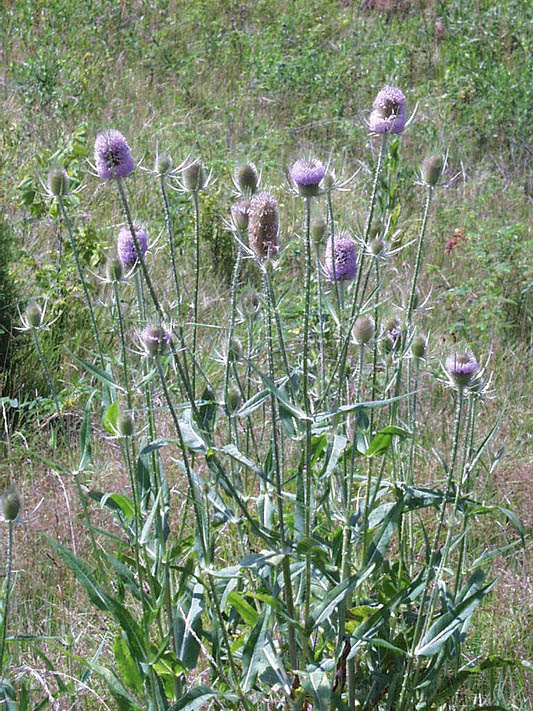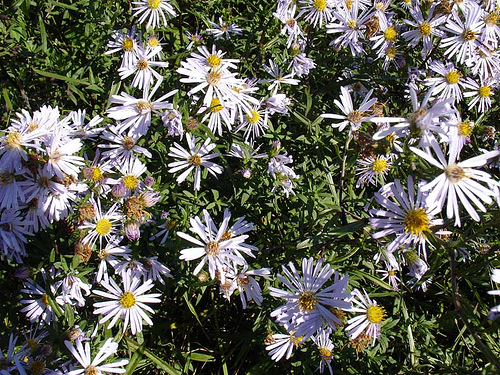Introduced species: Common Teasel (Dipsacus fullonum syn. Dipsacus sylvestris)
Characteristics: Common teasel is a weedy biennial. First-year growth is a rosette of ovoid (when younger) to oblong leaves with a “bumpy” surface and a prominent white midvein, up to 30 cm (1’) long. Plants flower in their second year or later, depending on how quickly root development occurs; the taproot may reach more than 60 cm (2’) in length and 2.5 cm (1”) in diameter. The flowering stalk may be over 2 m (6-7’) tall; leaves on this stalk are similar to those of the rosette, opposite, with stout prickles running along the underside of the midvein. The leaf pairs form characteristic “cups” that catch and hold rainwater–you might even find something living in this little pool. Spikes of pale purple flowers are borne at the top of the stalk, surrounded by long, spiky bracts; these also appear at the top of the flower spike. Teasel flowers from June to September; the flower stalks then turn brown and persist through the winter.
Spread: Teasel spreads by seeds, which may be dispersed by wind, water, or animal activity. While dispersal over large distances is uncommon, each teasel plant may produce up to 2,000 seeds, allowing it to spread rapidly in open, sunny habitats. Native to Eurasia and North Africa, it was introduced here as an ornamental and for use in wool carding. It has naturalized throughout much of North America.
Control: Rosettes of teasel can be removed with a dandelion digger. Cutting the flowering stalks shortly before blooming (or during early bloom) will prevent seed formation; the plant should die at the end of the growing season. Be sure to remove and properly dispose of flower stalks, which can still set seed even after cutting.
Native Replacements: Douglas aster (Aster subspicatus) is a native perennial up to 1.3 m (4’) tall, bearing pretty purple flowers throughout the summer, which will do well in habitat occupied by teasel. Full disclosure: this plant can seed rather exuberantly.


